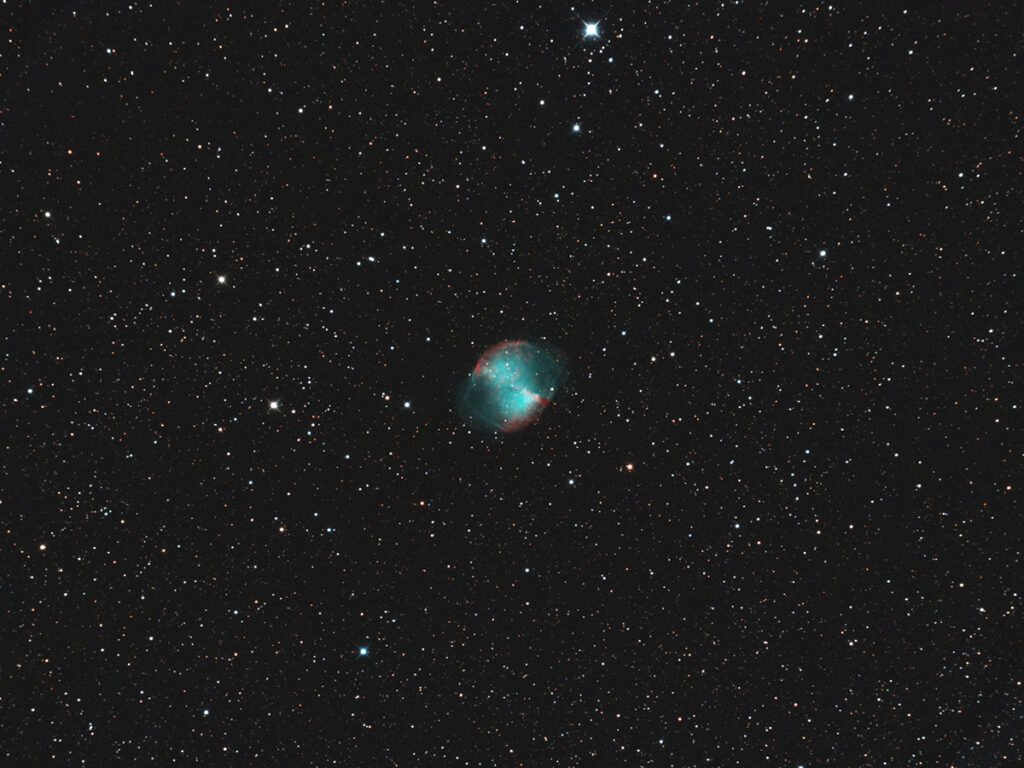
Telescope: Astro-Tech 8” f/8 Ritchey-Chretien, Orion Atlas EQ-G
Camera: Canon EOS Ra, Baader Mk III MPCC
Filter: Orion Imaging Skyglow Filter
Guide scope: Astro-Tech 60mm, Starlight Xpress Super Star, PHD2
Exposure (6-26-2021): 27x120sec, ISO 800, saved as RAW
Exposure (7-2-2021): 28x180sec, ISO 800, saved as RAW
Darks: Internal (Long Exposure Noise Reduction On)
Flats: 32×1/25sec, Tee shirt flats taken at dusk
Average Light Pollution: Red zone, Bortle 8, fair transparency, haze
Lensed Sky Quality Meter: 18.1 (6-26) & 18.5 (7-2)
Stacking: Simple average to accommodate the two different exposure times
White Balance: Nebulosity Automatic
Software: Backyard EOS, Deep Sky Stacker, Nebulosity, Photoshop
M27, the Dumbbell nebula, is an expanding shell of gas that was ejected from a sun-like star as it exhausted its hydrogen fuel. Swollen into a red giant, the star shed its outer shell while its core collapsed into a white dwarf. Fierce UV radiation from the collapsed core sets the surrounds gas aglow with the blue/green light of doubly ionized oxygen. The diameter of the nebula is about 1 light-year with an estimated age of 9,800 years. Located between Sagitta and Cygnus, M27 is fairly easy to find with a small telescope. Visually, it shows two lobes connected by a neck of nebulosity, giving the nebula its characteristic dumbbell shape.
This is the second of three first-light images taken with my new Canon EOS Ra camera. The source images were taken over two evenings about a week apart: 27x120sec on 6-26 and 28x180sec on 7-2. The exposure times reflect the poor transparency on the evening of 6-26. I wasn’t sure how well the two different exposure times would combine, so I used a simple average algorithm rather than using the usual sigma clip.
M27 is currently well placed rising the northeast in the early evening and is high in the south after midnight.
Recent Comments